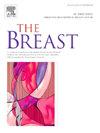Mapping breast cancer therapy with circulating tumor cells: The expert perspective
IF 5.7
2区 医学
Q1 OBSTETRICS & GYNECOLOGY
引用次数: 0
Abstract
Circulating tumor cells (CTCs) have emerged as a key prognostic biomarker for breast cancer, with their role becoming more pronounced in metastatic cases. In metastatic breast cancer, having five or more CTCs per 7.5 mL of blood is linked to poorer survival and more aggressive disease, marking it as stage IVaggressive. Conversely, fewer than five CTCs per 7.5 mL of blood indicates a less aggressive, stage IVindolent disease. Additionally, molecular CTCs characterization provides a real-time snapshot of tumor biology, capturing its temporal and spatial variability and providing insights into tumor behavior.
Beyond their role in predicting outcomes, CTCs can help guide treatment intensity as shown in clinical trials like the STIC trial, offering a new way to tailor therapy alongside other liquid biopsy biomarkers such as circulating tumor DNA.
The aim of our review is to focus on both enumeration and phenotyping of CTCs and examine how CTC-guided strategies can improve treatment tailoring and patient outcomes. We also explore the potential for integrating CTCs with other biomarkers, such as circulating tumor DNA, and discuss how innovative biomarker-driven clinical trial designs could further advance personalized treatment strategies.
用循环肿瘤细胞绘制乳腺癌治疗图:专家观点
循环肿瘤细胞(ctc)已成为乳腺癌预后的关键生物标志物,其在转移性病例中的作用越来越明显。在转移性乳腺癌中,每7.5毫升血液中有5个或更多的ctc与较差的生存率和更严重的疾病有关,标志着它是iv期侵袭性的。相反,如果每7.5 mL血液中少于5个ctc,则表明该疾病侵袭性较弱,处于潜伏期。此外,分子ctc表征提供了肿瘤生物学的实时快照,捕捉其时间和空间变化,并提供对肿瘤行为的见解。除了在预测预后方面的作用外,ctc还可以帮助指导治疗强度,如在STIC试验等临床试验中所显示的那样,提供了一种与其他液体活检生物标志物(如循环肿瘤DNA)一起定制治疗的新方法。我们综述的目的是关注ctc的枚举和表型,并研究ctc指导策略如何改善治疗方案和患者预后。我们还探讨了将ctc与其他生物标志物(如循环肿瘤DNA)整合的潜力,并讨论了创新的生物标志物驱动的临床试验设计如何进一步推进个性化治疗策略。
本文章由计算机程序翻译,如有差异,请以英文原文为准。
求助全文
约1分钟内获得全文
求助全文
来源期刊

Breast
医学-妇产科学
CiteScore
8.70
自引率
2.60%
发文量
165
审稿时长
59 days
期刊介绍:
The Breast is an international, multidisciplinary journal for researchers and clinicians, which focuses on translational and clinical research for the advancement of breast cancer prevention, diagnosis and treatment of all stages.
 求助内容:
求助内容: 应助结果提醒方式:
应助结果提醒方式:


